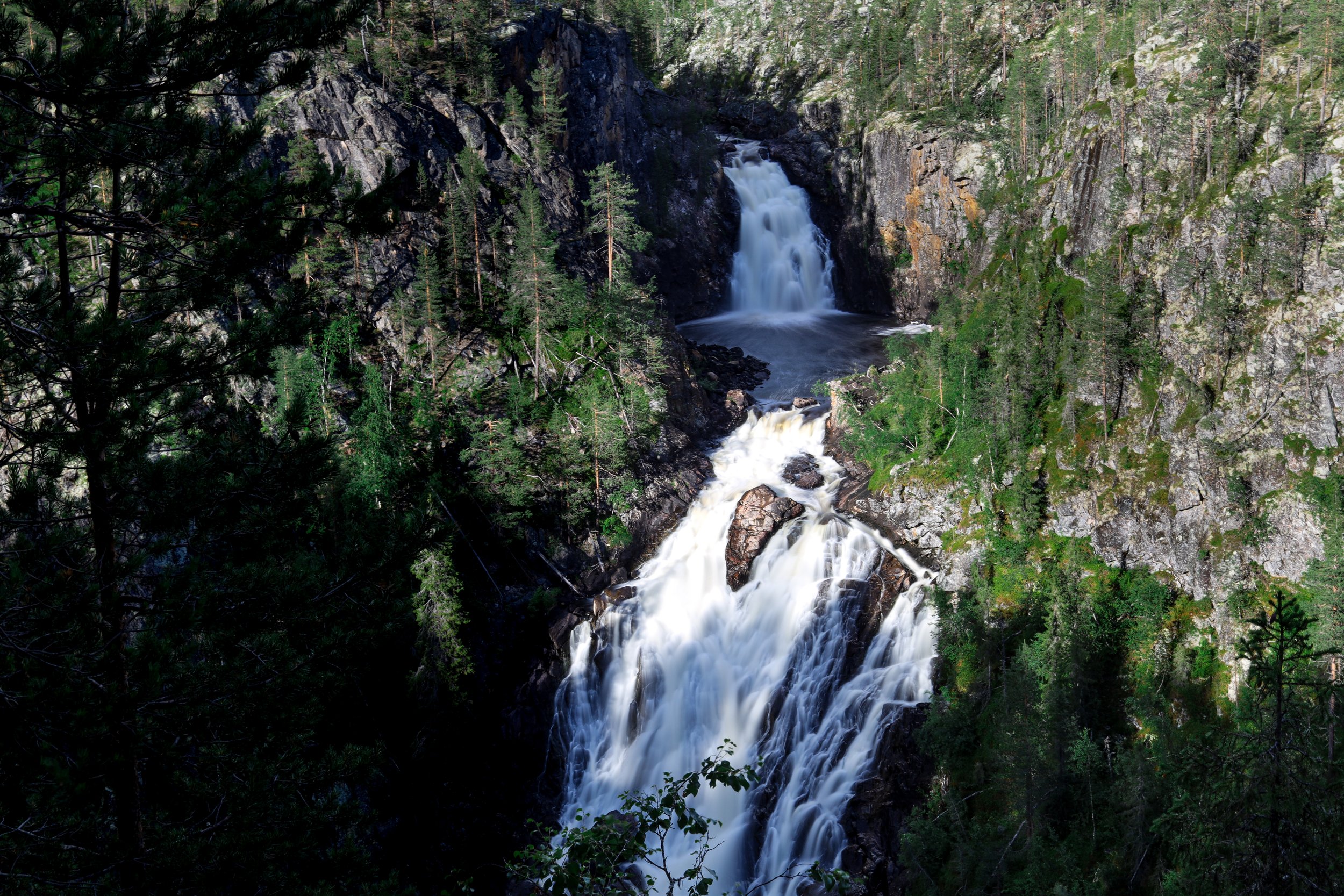
MUDDUS NATIONAL PARK
INTRO
Muddus National Park is one of the four Swedish national parks in the Laponia World Heritage Site. It is a taiga ecosystem — made up of primeval forests, vast marshes, and some amazing river + waterfall lookouts. The whole place feels peaceful, ancient, and off-the-beaten-path, and the park is known as one of the quietest places in the entire country. The park itself is huge, but only a small section in the south is open to visitors; the remaining area is restricted for wildlife protection.
Indigenous Sámi communities use this land in the summer and winter for reindeer husbandry. If you are a visiting hiker, remember that this land has been the Sámi people's well before the national park or modern conservation policy existed. We are by no means experts, and highly encourage everyone visiting this park — and all those in the Laponia World Heritage site — to learn more about their culture, as well as ways you can support the Sámi people with your visit to their homelands. To get you started, we’d recommend the International Work Group for Indigenous Affairs’ page on the Sámi people, as well as the Swedish government’s guidance on responsible tourism when visiting Sámi land.
Map of Muddus National Park — click to enlarge (source: Laponia)
WHAT YOU NEED TO KNOW
Duration: 1-2 days. I would personally recommend a day trip from Jokkmokk or Gällivare as being plenty of time — especially if you’re backpacking in Sarek or Padjelanta National Parks on your trip — but Muddus could be a much more off-the-beaten-path option for a shorter trek.
When to go: Most visitors come during the summer to hike, though its possible to go during the winter and explore on cross-country skis.
Accommodations + facilities: If you take a day trip, the best place to stay is in the nearby town of Jokkmokk. If you opt for an overnight trip, you can put up your tent anywhere along the hiking trails. There are also 4 self-catering cabins in the park. These cabins cannot be booked in advance though, which means you have to take a chance on their availability and/or bring a tent as backup.
Food + water: Bring enough food and water for your time in the park — there aren't too many spots to fill up water along trails, and there is nowhere to buy food in the park.
Guide or no guide: No guide is necessary as the trails are well-marked with plenty of maps available for purchase or online.
Difficulty: The hiking trails in Muddus have a range of difficulty, with quite a few easy options. The park is a great place to get a taste of Swedish Lapland without embarking into the more remote Padjelanta and Sarek National Parks.
Make sure you have: Bug spray and a rain jacket — par for the course in Sweden!
Primary costs: Because of Sweden's Freedom to Roam, entrance to all national parks are free. However, you do have to pay if you stay in one of the self-catering cabins. For us, renting a car for the day was around 100 USD — we booked it literally the night before, so I imagine booking in advance or for multiple days would be cheaper.
THINGS TO DO
Muddusagahtjaldak Trail: 14km hike to Muddus waterfall, the most popular attraction in the park. "Muddusagahtjaldak" means Muddus waterfall in the Sámi language. Its a 14km roundtrip hike from the Skájdde parking area and back, making it a perfect choice if you have just one day in the park.
Måskosgårsså Trail: 6km hike along the Lule river to Måskosgårsså, a narrow ravine in the park
Muttosbálges/the Muddus Trail: 50km, multi-day hike around the southern part of the park
Wildlife spotting: Muddus is a great place to watch for birds and reindeer. The park is also home to elk, brown bear, lynx, and wolverines, but they are much more elusive.
GETTING THERE
The best way to get to the park is to rent a car in the nearby town of Jokkmokk or Gällivare and drive to the Skájdde Entrance. If coming from Jokkmokk, which we recommend, take road E45 at Ligga between Jokkmokk and Porjus (snow was not an issue for us in July, but for springtime visitors, note that the road from Liggá to Skájdde is cleared of snow on March 1st each year). The drive takes about 35 minutes, and the road is paved most of the way, then turns into a very manageable dirt road for the final stretch. There is a parking area in Skájdde, and from there you can take a few hiking trails through the southern part of the park (the publicly accessible area).
Last updated: 31 July 2022




